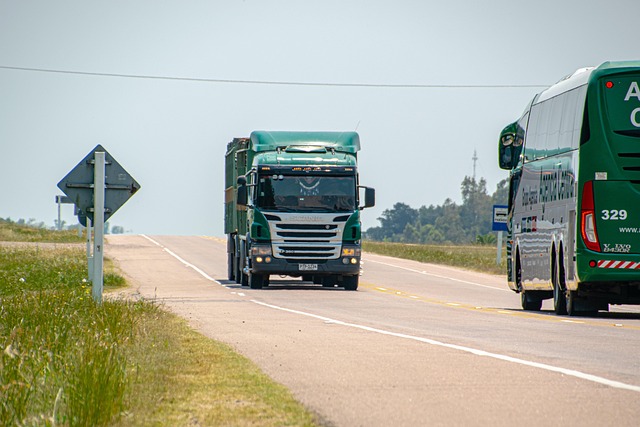Learn how to navigate the process of registering your car in California with our comprehensive guide. From understanding essential requirements to securing your vehicle’s registration, this step-by-step manual covers everything. We delve into gathering crucial documents, performing a mandatory DMV VIN verification, completing applications, and paying fees. By following these clear instructions, you’ll efficiently register your vehicle, ensuring compliance with California laws. Start the process today with our expert advice on dmv vin verification.
- Understand California Car Registration Requirements
- Gather Necessary Documents for DMV Visit
- Perform VIN Verification: Step-by-Step Guide
- Complete Application and Pay Registration Fees
- Receive Your Vehicle's Registration Documents
Understand California Car Registration Requirements

Before registering your car in California, it’s crucial to understand the state’s specific requirements. The California Department of Motor Vehicles (DMV) mandates several steps for new and used vehicle registration, including a thorough inspection process. One key aspect is the DMV vin verification, which ensures that the vehicle’s unique identification number (VIN) matches the make, model, and year stated on the documents. This step is critical to prevent fraud and ensure the safety of California’s roads.
Additionally, consider leveraging mobile vin verifier or even a mobile vin inspection service for convenience. These options allow you to complete the initial verification process from the comfort of your own home or location of choice, saving time and effort compared to traditional methods. Ensure that any service you use is reputable and follows the necessary guidelines to avoid any complications during the registration process.
Gather Necessary Documents for DMV Visit

Before heading to the California DMV, make sure you have all the essential documents and information ready. This process is crucial for a smooth car registration experience. You’ll need your vehicle’s registration certificate from the previous state, proof of insurance, and a valid driver’s license or identification card. Additionally, the DMV requires a Vehicle Identification Number (VIN) verification, so bring along any relevant paperwork that displays this unique code, such as your vehicle’s title or purchase agreement.
For those who prefer a more convenient option, consider scheduling a mobile VIN inspection or verification service. This allows you to get the necessary information and documentation without visiting the DMV in person. With these steps completed, you’ll be well-prepared to navigate the car registration process efficiently.
Perform VIN Verification: Step-by-Step Guide

Performing a Vehicle Identification Number (VIN) verification is an essential step in registering your car with the California Department of Motor Vehicles (DMV). This process ensures that your vehicle’s details match the information on record and helps prevent fraud. Here’s a simple, step-by-step guide to help you through the dmv vin verification process:
1. Obtain Your VIN: Start by locating your car’s VIN, typically found on the vehicle’s registration documents or engraved on the dashboard near the driver’s side door handle. For older vehicles, check the engine block or under the hood for the VIN number.
2. Choose a Mobile Vin Inspection/Verification Service: To save time and effort, opt for a convenient mobile vin inspection service that can perform a real-time, online verification. These services utilize specialized software to check your VIN against the DMV’s database, providing instant results. Some popular options include mobile vin verifier apps or professional vehicle inspection services that offer this service.
3. Input Your VIN: On the chosen platform, enter your car’s unique 17-character VIN code. Ensure accuracy as even a minor mistake can lead to incorrect results.
4. Receive and Review Results: Within seconds, you’ll receive detailed information about your vehicle’s history, including its make, model, year, and any reported issues or accidents associated with that specific VIN. Carefully review the data for any discrepancies or concerns.
5. Address Issues (if any): If there are outstanding issues like a recall or outstanding fines linked to the VIN, take appropriate action before proceeding with registration. The inspection report will guide you on the necessary steps to resolve these matters.
6. Proceed with Registration: Once you’ve verified your car’s history and addressed any concerns, you’re ready to complete the California DMV registration process.
Complete Application and Pay Registration Fees

To register your car in California, the first step is to complete the Application for Title and Registration (Form DV-140). This form requires essential information about the vehicle, including its make, model, year, and unique Vehicle Identification Number (VIN). You’ll also need to provide proof of insurance and a valid driver’s license. Once you’ve filled out the application, it’s time to pay the registration fees. These fees vary based on the type and weight of your vehicle, so be sure to check the California Department of Motor Vehicles (DMV) website for up-to-date rates.
A crucial part of the process involves a DMV VIN verification. This step ensures that your vehicle’s identification number is valid and matches the information on record. You can complete this verification online or in person at a local DMV office, even with the help of a mobile vin verifier if needed. By ensuring accuracy throughout, you’ll have one less hassle when it comes to registering your vehicle in the Golden State.
Receive Your Vehicle's Registration Documents

After submitting your application for car registration at a California DMV office or via their online portal, the next step is to receive and verify your vehicle’s registration documents. This includes ensuring that the Vehicle Identification Number (VIN) verification is accurate. You can facilitate this process with a mobile vin verifier, which allows for a quick and convenient VIN inspection right from your smartphone. By cross-referencing the provided DMV records with the vehicle’s actual VIN, you can confirm the details match, streamlining the registration procedure.
Once your car passes the VIN inspection, you’ll be on your way to receiving a valid California registration certificate. Keep this document secure as it’s essential for legal vehicle operation within the state. Always remember to update your contact information with the DMV if it changes to maintain accurate records.
Registering a car in California involves understanding state requirements, gathering essential documents, performing a DMV VIN verification, completing applications, and paying fees. By diligently navigating these steps, you’ll securely establish ownership and legal operation of your vehicle within the Golden State. Remember to keep your registration documents updated for seamless driving experiences.
